Review: Juliana Furtado and Norco Fluid 7 Forma
Originally posted on April 1, 2016 at 11:07 amTester: Emily Walley | Height: 5’4” | Weight: 110 pounds | Insteam: 29.5”
Originally published in Issue #189
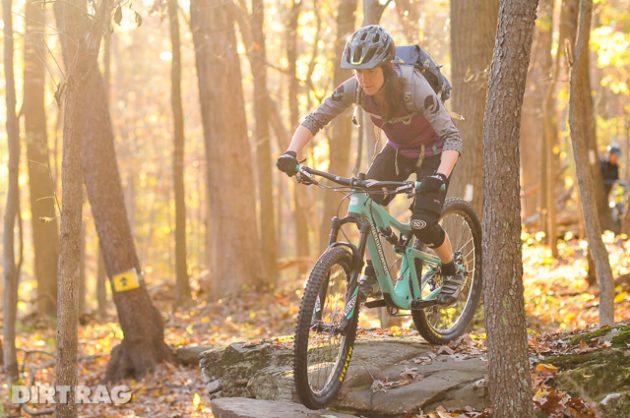
As women’s mountain bike options continue to evolve, it can be difficult to find the ideal bike for your skill level as well as your wallet. If you are a new rider, with undetermined commitment, the options seem expensive and few. Options for an intermediate to advanced rider are plentiful, but with so many variables—weight, versatility, travel, wheel size, cost and appearance—how do you choose?
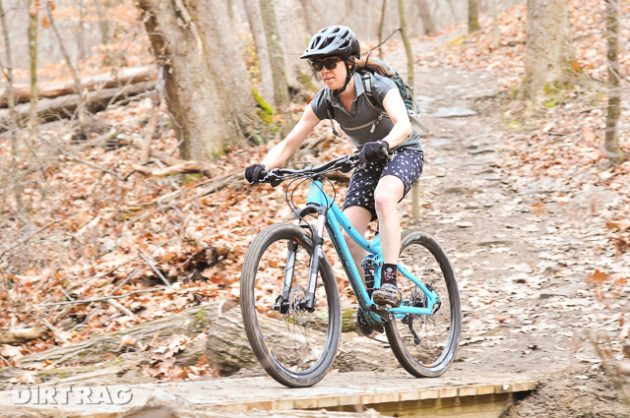
These bikes from Juliana and Norco are similar at first glance, but almost $3,000 separates them.
The 130 mm Furtado and the 120 mm Fluid 7 Forma share their frames with the respective companies’ men’s (or, maybe more correctly, “gender neutral”) models, but are women’s bikes due to “female-friendly” components, such as thinner grips, women’s saddles and different color palettes. I’m often drawn to the gender-neutral frame aesthetics, but I appreciate that Juliana and Norco have opted for solid brights and minimal graphics. The Fluid Forma and Furtado, each provide a clean aesthetic and a feminine feel, without going overboard.
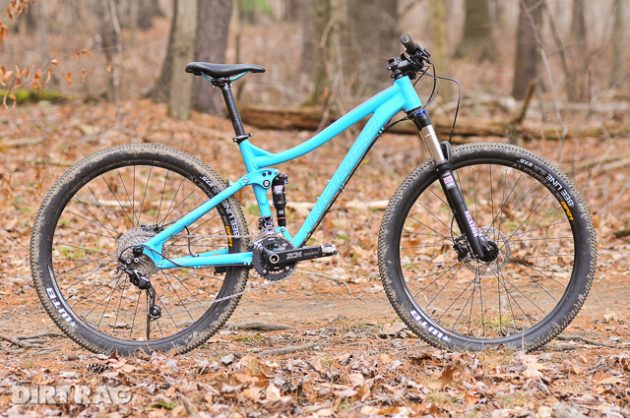
“Forma” is Norco’s designation for women’s-specific. The Fluid 7 Forma shares the frame and suspension design with Norco’s Fluid 7. The company’s Fluid line is available for the whole family, offering frames with 20, 24, 26 and 27.5 inch wheels. According to Norco’s marketing and communications supervisor, Sarah Moore, “The Fluid is intended for a rider who wants a capable trail bike, but has a limited budget. This could be the multi-sport athlete, or someone just getting into riding who isn’t ready to commit to a carbon bike.”
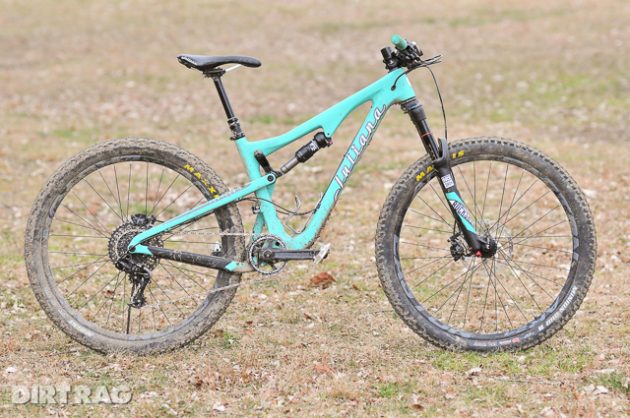
The Furtado shares the frame design with the Santa Cruz 5010 and is available in six builds. Juliana uses two different levels of carbon in its frames, a heavier C and a top-tier CC carbon. This allows the company to offer a less-expensive frame while adding a little over a half-pound of frame weight. (Read the full details of the Furtado’s 2016 redesign here.)
There’s nearly a 2.5 pound difference between the C-level Furtado and the Fluid Forma, weighing in at 27.7 and 30.1 pounds, respectively. While the weight difference is significant, the Furtado and the Forma both have short, 16.7 inch chainstays giving them a lightness beyond hard numbers. It’s great to see an industry-wide push toward shorter chainstays as it makes lofting the front wheel much easier, particularly for shorter riders.

The Fluid Forma is equipped with a RockShox Recon Silver fork and RockShox Monarch RL shock, which both have two positions: open and lockout. Due to a very supportive platform I don’t feel the need to lock out the suspension while off-road. The Furtado has a RockShox Pike RC and a Fox Float shock. While I tend to keep the fork’s compression in the open position, I find myself switching the rear shock from descend to trail on lengthy flat sections and climbs.
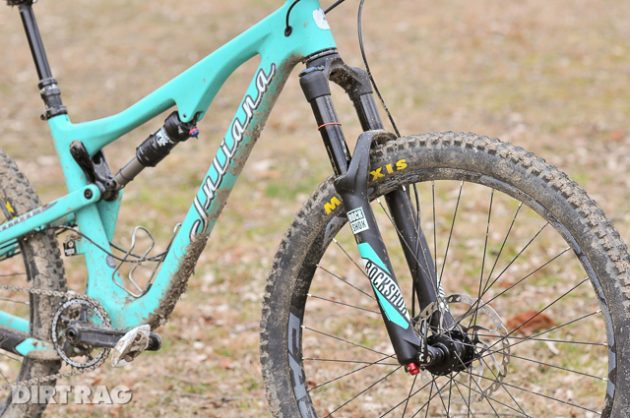
The Furtado’s suspension has been tuned to provide a higher initial leverage ratio and a flatter curve overall. The plush initial stroke feels supple on smaller rocks and roots. Both the Fluid Forma and the Furtado have an up-over-the-pedals riding position and a firm pedaling platform that excels for climbing and powering through flat terrain.
The Fluid Forma’s low 22/36 gear ratio offers ample range for climbing steep ascents, but its climbing prowess in technical terrain is hindered by a lack of traction, mostly the fault of the tires. The small, closely spaced tread of the Forma’s WTB Bee Line tires makes them ideal for dry and hard-packed conditions. While they have a good rolling speed, they weren’t suited to the rooty, damp trail conditions I ride.
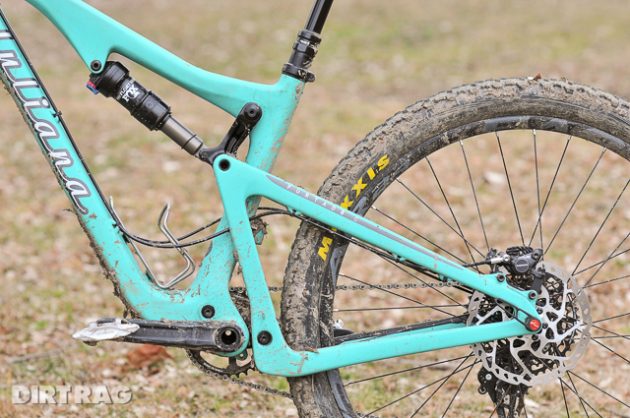
While the Furtado’s SRAM 10-42 tooth cassette doesn’t offer the range of the Fluid Forma, the 1×11 SRAM setup hits the sweet spot and simplifies shifting. If needed, the Race Face 32 tooth chainring can be swapped to meet the needs of your terrain. Gearing was rarely the limiting factor in my ability to clean climbs. Short of long, steep ascents gearing will likely not be an issue.
The Furtado’s Maxxis Minion DHR II front tire grabs anything in its path, be it wet, loose or otherwise, and the Maxxis Ardent rear has significantly more traction than the Bee Line tires for climbing. I love the downhills, and while I didn’t feel uncomfortable descending on the Fluid Forma, its lack of traction, steeper headtube angle and lack of a dropper post had me holding back.
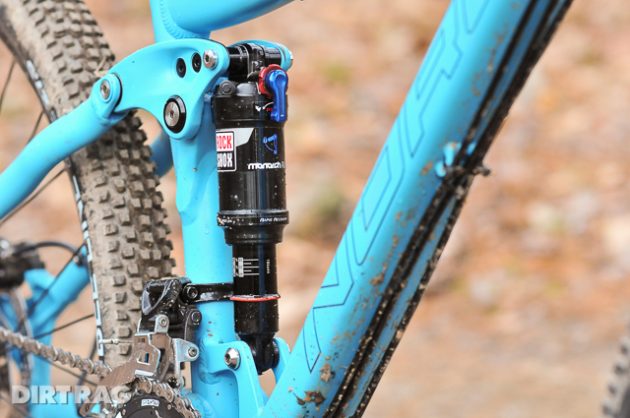
On the flip side, the Furtado comes across as such a capable descender that it made me feel like a slouch. It wasn’t just traction that had me cheering when the Furtado pointed downhill. Slightly wider bars, 760 versus 740 mm, a slacker head tube angle, 67 versus 68.5 degrees, and 125 mm dropper post provided an increased sense of stability, capability and maneuverability.
Outright braking power comes into play here as well, as the Furtado’s Shimano SLX brakes with 180 mm rotors offer noticeably stronger stopping power than the Fluid Forma’s Shimano M-396 brakes with 160 mm rotors. I’ve grown to really appreciate the bike/body separation of riding with a dropper post. While there are no expectations of a dropper on a bike at the Fluid Forma’s price point, it’s great to see that Norco has added external routing to accommodate one.
The short chainstays on both bikes facilitate riding switchbacks. The short rear-center provides agility, while the long front-center provides stability. In turns, the Fluid Forma’s steeper headtube angle requires more of a steering motion versus the leaning motion required for the Furtado’s slacker front end.
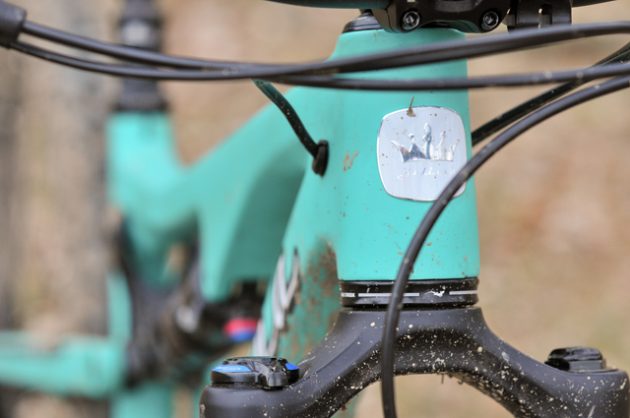
Juliana designs bikes for female shredders and this shows through the company’s commitment to creating comparably spec’d bikes across the Santa Cruz and Juliana line. As a result, the Furtado is an unbelievably capable bike that inspired confidence. When you discover a bike with geometry to fit your riding style, everything falls into place. The Furtado made me want to ride harder and faster on every ride.
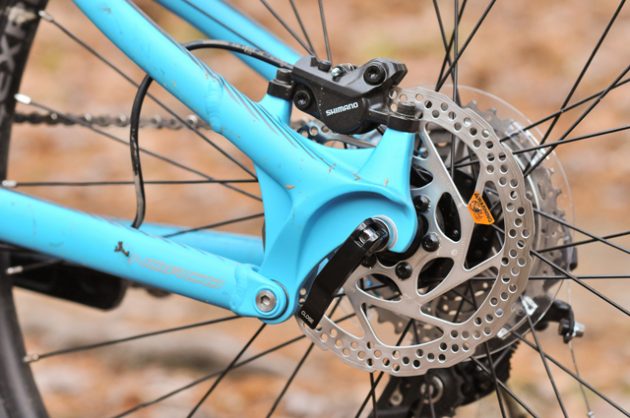
While I can’t resist being drawn to what Juliana offers the women’s market, I appreciate Norco’s approach. Opting to make an affordable and capable full-suspension bike is essential amongst the premium options. The Fluid Forma is a great stepping stone for the new rider looking for her first full-suspension bike. At a low price point of $1,775 you get an all-around trail bike and solid platform to build on. A few changes on this bike would provide significant improvement in capability and riding confidence. With tires appropriate for your riding style and trail conditions— the Fluid Forma’s rims are tubeless ready—and a dropper post, you’d still be under $2,500. The new rider would likely be happy riding this bike for years to come.
Both the Furtado and the Fluid 7 Forma facilitate growth with their respective riders. The Fluid Forma will help the beginner transition to harder trails, and the Furtado helps the intermediate and advanced rider discover her full potential.
Norco Fluid 7.2 Forma
- Price: $1,775
- Sizes: XS, S (tested), M
- Wheelbase: 43.3”
- Top Tube: 22.5”
- Head Angle: 68.5°
- Seat-Tube Angle: 74.5°
- Bottom Bracket: 13.1”
- Rear Center: 16.7”
- Weight: 30.1 lbs. w/o pedals (specs based on size tested)
Juliana Furtado C
- Price: $4,699
- Sizes: S (tested), M, L
- Wheelbase: 44”
- Top Tube: 22.7″
- Head Angle: 67°
- Seat-Tube Angle: 74°
- Bottom Bracket: 13.1”
- Rear Center: 16.7”
- Weight: 27.7 lbs. w/o pedals (specs based on size tested)